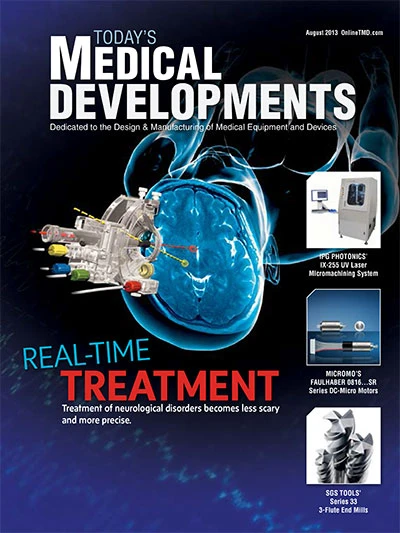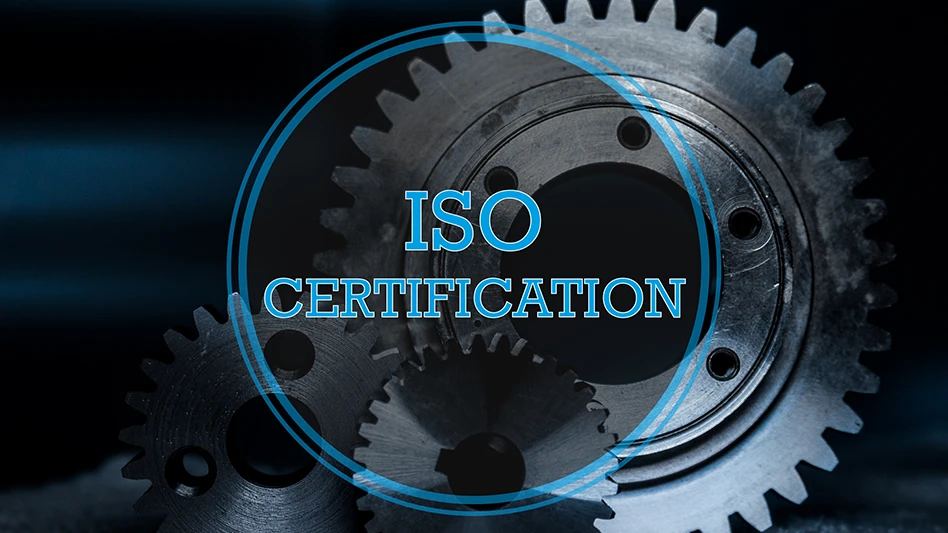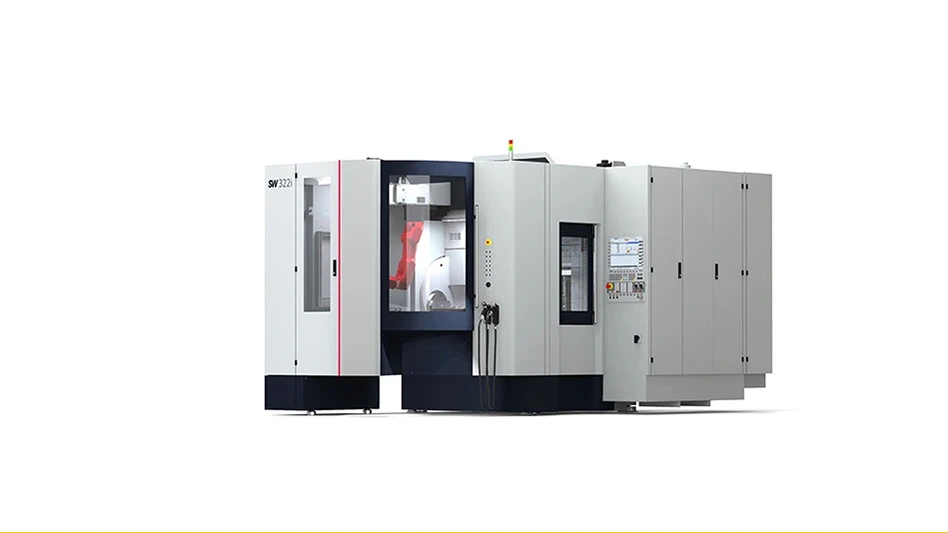 ClearPoint uses MR imaging to guide surgeons as they perform a variety of brain procedures. |
Gerhard Schubert was an avid tennis player with a devastating serve. In his mid-30s, Schubert noticed something different about his game. He struggled to toss the tennis ball into the air during a serve, which he says was the best part of his game. It was Schubert’s first symptom of what doctors later diagnosed as Parkinson’s disease.
A report from Everyday Health’s website in June 2013 chronicled Schubert’s story of how he quelled his symptoms.
According to Everyday Health, two decades after Schubert was first diagnosed, his symptoms became worse, even though he was on a multitude of medications.
“I can’t walk to the bathroom when I get up,” Schubert told Everyday Health. “It takes about 45 minutes to an hour for the meds to kick in.”
After a while, the medications stopped working.
Parkinson’s disease has no cure, but treatments are available to mitigate some of its effects. As Schubert harrumphed over his options, he and his doctors discussed deep brain simulation (DBS). DBS is performed in MRI suites. Doctors implant small electrodes in the areas of a patient’s brain that control body movement to help regulate involuntary movements.
According to Everyday Health, doctors traditionally performed this procedure using MRI images taken days before the operation. However, like any organ, the brain moves around, so sometimes those images are not accurate during the actual procedure. To overcome this, surgeons keep patients awake and use their responses to indicate whether or not the electrodes are properly placed.
MRI Interventions, based in Irvine, Calif., has released a system its representatives say squashes that problem. The company’s ClearPoint System is an MRI-neuro navigation system that uses real-time images to help doctors ensure accuracy. That means patients can stay asleep for the whole operation.
Schubert decided to undergo DBS, a decision he says suppressed his symptoms and changed his life.
“I don’t know if I’d be here today quite frankly,” he told Everyday Health, “because I couldn’t take any more medication.”
ClearPoint Procedure
According to MRI Interventions’ website, ClearPoint procedures are performed in standard 1.5T and 3T MRI scanners.
To begin the process, a surgeon immobilizes the patient’s head by using a reusable fixation frame and single use, disposable pin inserts, made out of titanium and plastic.
Next, the doctor covers the MRI scanner bore with a drape and places a component on the patient’s scalp called the SmartGrid, which helps to determine where to make the hole for surgery. Then, the surgeon uses a marking tool, in conjunction with the marking grid, to pierce the patient’s scalp and mark the skull. When the scalp is resected, the surgeon uses the mark as the indication to know where to drill.
Doctors then mount a SmartFrame to the patient’s skull, which is a single-use disposable trajectory frame that enables precise MRI-guided alignment to a specific target within the brain. Once aligned, the SmartFrame allows surgeons to insert devices, such as ceramic lancets and stylets from an accessory kit, to open the membrane between the skull and the brain, and ultimately reach the desired target point within the brain.
The ClearPoint System can be used to treat a number of neurological disorders, such as Parkinson’s disease. It can also be used for brain biopsies and focal laser ablation in addition to asleep DBS.
 Left: The ClearPoint software uses MR images to provide navigational instructions for precisely aligning the SmartFrame’s trajectory to the target. Right: ClearPoint’s reusable hardware includes a multichannel imaging head coil and integrated head fixation frame, dedicated computer workstation with surgical navigation software, and MRI-compatible in-room computer monitor. |
ClearPoint System
The roots of the ClearPoint System stem back to MRI Interventions’ start in 1998, when the company was founded out of Johns Hopkins University in Baltimore, Md.
Kimble Jenkins, CEO, MRI Interventions, says the company’s goal since the beginning has been to enable real-time, MRI-guided therapeutic interventions, though its methods of reaching that goal have changed throughout the years.
“From 1998 to 2002, we deployed significant resources to fund our efforts to develop the foundational capability for enabling MRI-guided interventions and to build our intellectual property position,” Jenkins explains in an email.
In 2003, the company shifted its focus “to identifying and building out commercial applications for the technologies developed in prior years,” Jenkins says.
Revamping the company required time, but Jenkins didn’t have time to waste. Instead of waiting to build a manufacturing and design team, Jenkins and MRI Interventions’ COO, Pete Piferi, contacted Ziba. An outside design firm in Oregon with a medical device group in southern California, Ziba is located near MRI Interventions. The two companies worked together while MRI Interventions developed a manufacturing and design team of its own.
“They helped out on several components, mainly the SmartFrame,” Piferi says. “They did the initial design work on that, until we could ramp up our team in our Irvine facility.”
Ziba and MRI Interventions worked together for about a year on the ClearPoint system, with designers from both companies suggesting how to make the system better.
“They did most of the physical design work, and we provided input on that,” Piferi clarifies. “Working with them, we made temporary iterations. The initial models were made with a rapid prototyping method called stereolithography.”
Ziba helped design the SmartFrame component, which required precise injection molding. However, most manufacturers don’t offer that process.
“It took me going to several different injection companies and injection houses, trying to find someone that had the capabilities to do small parts at that high-level precision,” Piferi says.
Piferi has four requirements when choosing a third-party contractor: expertise, capabilities, stability, and track record.
“A lot of these smaller places kind of come and go, and we wanted someone that would be there, that could finish a project like this,” he explains.
He ultimately chose Microdyne Plastics, a local, ISO 9001:2008-certified injection mold manufacturer in Colton, Calif.
Microdyne developed all the molds for the part based on CAD drawings from Ziba. The injection-mold process took around four months to finalize, Piferi says.
By that time, Jenkins and Piferi had developed their own team. In-house designers and manufacturers took over the steps of product development, including modifying, assembling, and testing parts. Since then, all development, testing, and manufacturing has been done at MRI Interventions’ facility in Irvine.
“It was a way to get the program started, working with a good team that had expertise in novel devices,” Piferi states. “They had some pretty smart people there, so it worked out very well.”
 The ClearPoint platform provides for the treatment of a range of neurological diseases and disorders by aiding in the placement of deep brain stimulation leads, neuro catheters, focal laser ablation catheters, and biopsy needles. |
Materials
Engineers carefully selected materials for the ClearPoint system, making sure all of it is MRI-compatible.
“We use a Teflon material, we use a polyester material…there are quite a few different materials we use for the applications of our system,” Piferi says. “Probably the majority of the materials are polymer-based. They’re all plastics of some sort.”
Or, almost all plastics.
The system also incorporates titanium, which is non-magnetic, for screws and “things that have to be hard or for things that have to hold the cutting edge,” Piferi says. Components containing titanium are short, because long, metallic parts can heat up inside an MRI scanner. “Even though they’re MRI compatible, we like to keep them very short.”
Ceramic components are integral to the system because they do not distort images. These distortions – called “artifacts” – can be caused when a metallic object is within the imaging field. For example, if you put a piece of non-magnetic stainless steel inside a patient’s body, the image will show a signal void, which is a black area where the device is located.
The majority of the SmartFrame is made out of polycarbonate. It also includes some liquid-filled areas to provide visulatization in the MR images.
 The ClearPoint SmartFrame device is a single-use, disposable trajectory frame that is MRI-compatible. |
Software
Software from Microsoft Windows enables a surgeon to plan the procedure – selecting a target and trajectory, and adjusting the SmartFrame so that the surgeon can precisely reach his target.
The software allows doctors to monitor the surgery in real-time. Most systems require doctors to use images taken days before an operation. However, ClearPoint’s software imports MRI images during the operation, allowing doctors to visualize every part of the procedure as it is happening.
“The real-time visualization allows a surgeon to confirm the location of surgical instruments and even the final results during the procedure,” Jenkins says.
For example, the software recognizes the SmartFrame, which is attached to the patient’s skull, and guides the surgeon to adjust to the component for the best path toward the target. The software also tells the surgeon how deep the target is, so he can decide which tool works best.
Another outside company helped develop the software. Merge Healthcare, based in Toronto, Ontario, Canada, has become like a partner for MRI Interventions. The companies work together to gather design requirements to update the software. Merge then develops the software based on agreed design requirements.
“At some point in our future, we plan on developing in-house capabilities for our software, but currently we’re still using Merge as our software partner,” he elaborates. “We’ve continually worked with them. They help support our software, and they continue to make improvements to our software,” he explains.
Inspiring Confidence
According to a saying in tennis, when the ball hits the top of the net, which side the ball land on depends nearly wholly on luck. The player puts the fate of the point completely to chance.
When Schubert’s Parkinson’s medication stopped working, he didn’t leave his fate to chance. When doctors perform DBS, precision and accuracy are key. They don’t want to leave the outcome to luck.
The ClearPoint system is designed with people like Schubert in mind. It provides an option that doesn’t require uncomfortable surgery or taking dozens of daily pills. It inspires a bit of confidence in folks suffering from neurological disorders. It allows them to face their condition, like a player serving an ace, with a guffaw, not a grimace.
MRI Interventions
www.mriinterventions.com
Irvine, Calif.

Explore the August 2013 Issue
Check out more from this issue and find your next story to read.
Latest from Today's Medical Developments
- Tariffs threaten small business growth, increase costs across industries
- Feed your brain on your lunch break at our upcoming Lunch + Learn!
- Robotics action plan for Europe
- Maximize your First Article Inspection efficiency and accuracy
- UPM Additive rebrands to UPM Advanced
- Master Bond’s LED415DC90Med dual-curable adhesive
- Minalex celebrates 60 years of excellence in miniature aluminum extrusions
- Tormach’s Chip Conveyor Kit for the 1500MX CNC Mill





